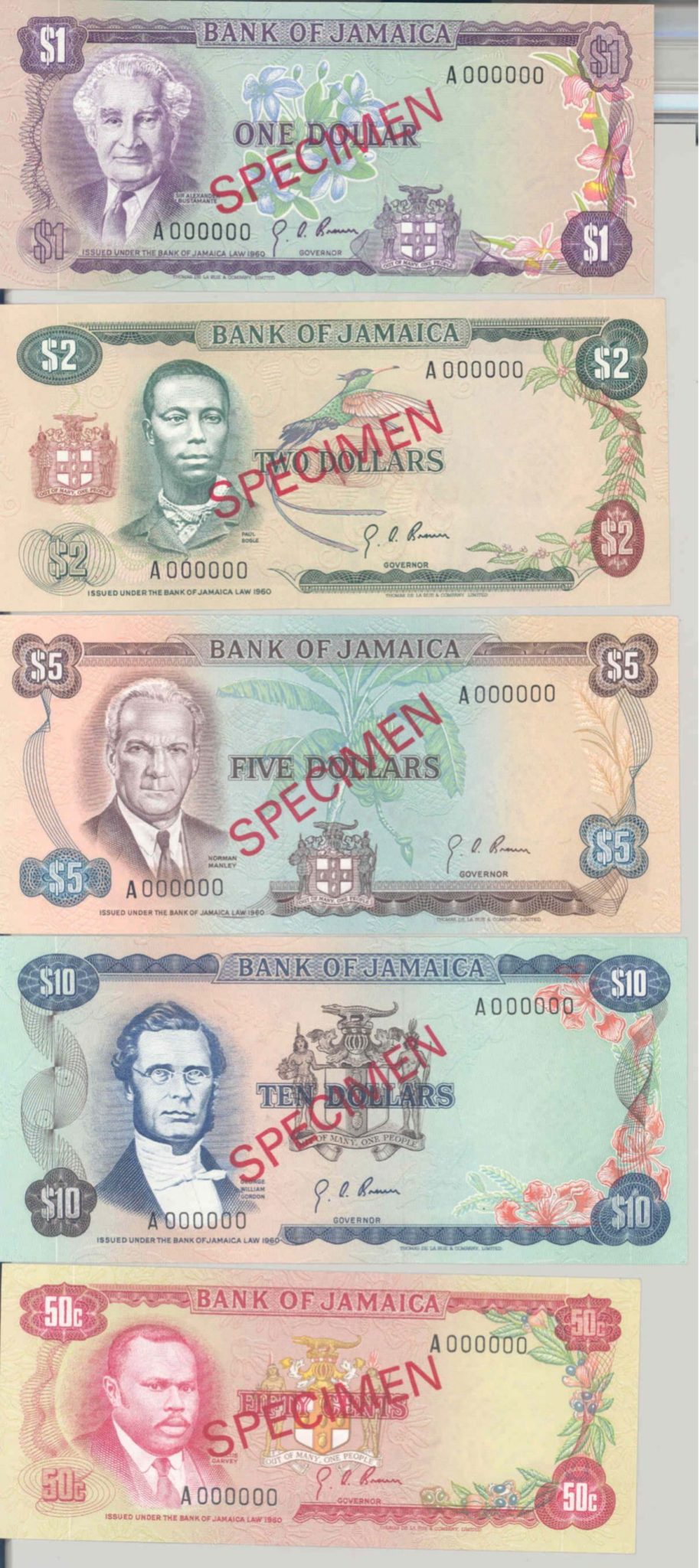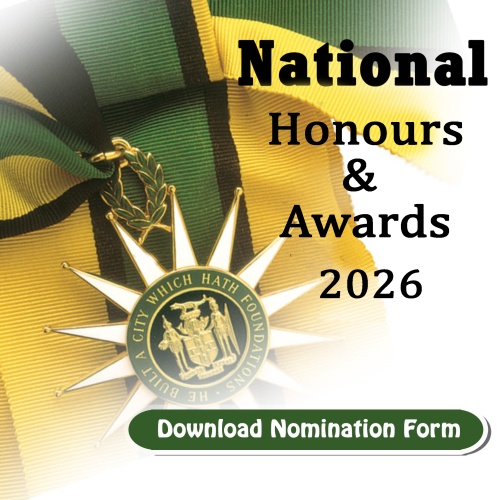Currency Changes Over the Years
By: , July 27, 2022The Full Story
Like all nations, Jamaica has seen its fair share of changes and successes in its 60 years as an independent country.
One of the most intriguing changes is that of the currency. If one should take a sample of the notes or coins used over the course of the six decades, it would give an insightful and historical picture of the island.
To fully appreciate the evolution of the Jamaican currency, one must go back to where it all started. Up until the early 16th century, when the Spaniards colonised Jamaica, there was little need to use actual currency. What was used instead was a barter system.
The Spanish would trade with the indigenous people (the Tainos), trinkets, scissors, mirrors or glass beads. From there, the means of exchange changed as copper coins came into play. The small circulation of copper coins or maravedis that were used were described as very thin and lightweight.
According to the Bank of Jamaica (BOJ) Money Museum, these coins were brought to Jamaica from Santo Domingo. They sometimes had varying stamps of anchors or keys, which appeared to show their value.
By the 17th and 18th centuries, the currency had evolved, partly because trade had become more consistent to the territory. The main coins were minted in Spain or Spanish-American countries, such as Mexico and Peru, owing to their durability and accessibility.
The currency that was the basic Spanish silver monetary unit was the real. According to the BOJ Money Museum, eight reales made a dollar or ‘piece of eight’ as it was commonly known.
In the 19th century, Jamaica was fully under British rule, and the Crown debuted coins made from silver and copper known as anchor money.
By 1840, the passage of an Act stated that the currency of Britain should be that of Jamaica. This meant that half penny, penny ha’penny, farthing and penny, which were the lower denomination of copper coins, as well as the higher denomination silver coins, threepence, sixpence, shilling, florin, half crown and crown were to be used.
The pennies and half-pennies minted in 1869 were the first truly Jamaican coins. Between that period and close to Independence, these coins were in circulation. The penny and half-penny made of cupro-nickel were authorised for use in Jamaica by the Crown.
They weighed the same as the English coins of similar value but had the Jamaican coat of arms on the reverse.
The first bank notes used in Jamaica were issued by private commercial banks in the mid-19th Century.
Two years prior to the Independence of Jamaica (August 6, 1962), the Bank of Jamaica Act came into force. The passage of the Act allowed for the BOJ to be the sole issuer of notes and coins. These notes debuted on May 1, 1961 in the denominations of five and 10 shillings, and one and five pounds.
Simple in design, they had the image of Queen Elizabeth II. The five-shilling note was red in colour, the 10-shilling was purple and the one and five pound were green and blue, respectively. They all had the signature of the first Governor of the BOJ, Stanley W. Payton.
Pamela Simpson, a 67-year-old retired dressmaker, recounts how the money was used during that period.
“When you take five shillings and go to the shop you could hardly carry the things home. You could get cooking oil, flour, rice, kerosene oil, cornmeal, butter, saltfish… basically the essential items. Two bars of soap were for sixpence,” Ms. Simpson says.
Another retiree, 76-year-old Coralee Hylton, also shared fond memories using the currency. A shopkeeper, she remembers a train ride costing five pence. “On the Kalamazoo from May Pen to Frankfield in Clarendon that was the cost,” she notes.
Ms. Hylton says you could also buy beef, yam and potato by the heap for six pence.
Despite the changing of the guard, the lowering of the Union Jack and the raising of Jamaica’s national flag in 1962, the nation opted to keep the British currency as legal tender.
Retired Professor of Sociology and Ethics at Leeds University in Northern England, Albert Powell, recalls living in Jamaica during the period.
“One pound was 20 shillings, and the shilling was made up of 12 pence… . A penny divided into two half pennies or four farthings… . So, a farthing was a quarter of a penny and the penny was one twelfth of a shilling and a shilling was one twentieth of a pound.
Now a farthing could get you a candy called paradise plum, which is equivalent to a mint ball now,” he says.
“A penny was a regular gift that you get from your parents to buy candy, which is equivalent now to about $20,” the 81-year-old adds.
Seven years after Independence, Jamaica changed course, moving to a decimal system currency, finally removing the British currency from legal monetary tender.
On September 8, 1969, under the decimal system, Jamaica started using dollars and cents. Coins were issued in denominations of one, five, 10, 20 and 25 cents. Notes were issued in denominations of 50 cents, one, two and 10 dollars.
With the introduction of the decimal system, Jamaica was given the opportunity to have a design that reflected its own identity.
According to the BOJ Money Museum, the decision was made to replace the portrait of the ruling British monarch (which had appeared on the obverse of all coins) with that of the Jamaican coat of arms. National symbols were to appear on the reverse.
The one-dollar note bore the image of Jamaica’s first Prime Minister and National Hero, Sir Alexander Bustamante, the two-dollar had the image of National Hero, Paul Bogle and the 10-dollar note had the image of National Hero, George William Gordon.
On the 25-cent coin was the National Bird, the swallow-tailed hummingbird or doctor bird; the 20-cent featured the national tree, the blue mahoe; the 10 cent, the national flower, which is the lignum vitae, the five cent had the crocodile and the one cent, the National Fruit, the ackee.
Between 1970 and 1990 a raft of changes and amendments were made to the Jamaican currency.
A $5 note was introduced bearing the image of National Hero, Norman Washington Manley and the one cent was changed from copper to bronze. The 50-cent note, which bore the image of Jamaica’s first National Hero, Marcus Mosiah Garvey, was replaced by a coin and the $20 note came into circulation.
By 1978, new 10 and 20-dollar notes were introduced, and old notes were demonetised. The $20 note used the image of Noel N. Nethersole, who was Jamaica’s first Finance Minister. In 1986, the $100 note was introduced using the image of Jamaica’s second
Prime Minister, Sir Donald Sangster. Just two years later another note was introduced to the existing batch. The $50 note bearing the image of National Hero, Samuel Sharpe, came into circulation, and by 1990 the $1 note was replaced by a coin.
The 25 and 10-cent coins were then introduced in 1991. The 25-cent coin now bore the portrait of National Hero, Marcus Garvey, and was made of nickel-plated steel. In addition, the shape of the coin was changed from round to seven-sided. The new 10-cent coin, also made of nickel-plated steel now carried the portrait of National Hero, Paul Bogle.
One of the most popular notes was introduced in 1994. The $500 note or the ‘Nanny’ as it was widely called bore the portrait of Jamaica’s only National Heroine, Nanny of the Maroons. The note was seldomly called by its value, and often in conversations, people would ask their friends for money by asking for a ‘Nanny’.
By 1999 the old five, 10, 20, 25, 50 cent and one dollar, which were issued in 1994, were demonetised with new designs in circulation. New 25 cent and 10-cent coins were introduced. It was also decided to replace another note with a coin and the $10 was now a coin.
The new $10 coin had a unique design with the circumference of the coin having a serrated edge.
Another of Jamaica’s former prime ministers was placed on a new note. In the year 2000, the newly introduced $1,000 note bore the image of Michael Manley. On the reverse was the image of Jamaica House, which was constructed in 1962 and now serves as the offices of the Prime Minister.
In 2009, the $5,000 note was introduced. The note bears the portrait of another former prime minister, Hugh Lawson Shearer. However, in 2018, it was announced that the one, 10 and 25-cent coins were demonetised, leaving the $1 to be the lowest coin denomination.
One of the most constant things in life is change, and in March 2022, while making his contribution to the Budget Debate for the 2022/23 fiscal year, Finance Minister, Dr. the Hon. Nigel Clarke, announced that the currency would undergo yet another change.
He noted that research had shown that there was a need for a currency denomination between the $1,000 note and the $5,000 note.
“The BOJ has advised me that the introduction of a $2,000 note would bring greater efficiency to the currency structure, allowing cash transactions to be settled easier,” Minister Clarke said.
He noted that the nation would be redesigning its bank notes for financial, technical and historical reasons.
“In this 60th year of our Independence this aspect of the national project must be restored. Our national heroes must, once again, appear on our banknotes,” Minister Clarke said.
The redesigned notes will have the images of Jamaica’s seven national heroes and four deceased prime ministers.
With the newly designed banknotes, national heroes Paul Bogle and George William Gordon, who were on Jamaica’s original banknotes, but who today are on none of our banknotes, will appear together on the upgraded $50 banknote.
Marcus Garvey, who was on Jamaica’s 50 cent banknote, but who is on no banknote today, will be restored and will appear alone on the upgraded $100 banknote. Nanny of the Maroons and Sam Sharpe will appear together on the upgraded $500 note. The two men noted as the founding fathers of the nation, Sir Alexander Bustamante and Norman Manley, will appear together on the upgraded $1,000 banknote.
Former Prime Ministers Michael Manley and Edward Seaga will appear together on the new $2,000 banknote and Donald Sangster and Hugh Shearer will appear together on the upgraded $5,000 note.
Jamaica, after 60 years as an independent nation, has gone through several changes of its currency, but with each change a new chapter of the nation’s history is being written.
The banknotes will serve as a reminder of where we have been, where the nation intends to be and pay homage to the national heroes and great leaders who helped to shape the country’s future.



